-
 Bitcoin
Bitcoin $108,228.4534
-0.75% -
 Ethereum
Ethereum $2,524.8743
-1.10% -
 Tether USDt
Tether USDt $1.0003
-0.01% -
 XRP
XRP $2.2250
-0.63% -
 BNB
BNB $656.0016
-0.57% -
 Solana
Solana $148.4911
-1.36% -
 USDC
USDC $1.0000
0.00% -
 TRON
TRON $0.2846
-0.95% -
 Dogecoin
Dogecoin $0.1646
-1.38% -
 Cardano
Cardano $0.5767
-1.03% -
 Hyperliquid
Hyperliquid $39.3026
0.80% -
 Sui
Sui $2.9291
0.05% -
 Bitcoin Cash
Bitcoin Cash $483.6554
0.19% -
 Chainlink
Chainlink $13.2526
-1.01% -
 UNUS SED LEO
UNUS SED LEO $9.0390
-0.17% -
 Avalanche
Avalanche $17.9293
-1.10% -
 Stellar
Stellar $0.2376
-1.15% -
 Toncoin
Toncoin $2.7533
-1.89% -
 Shiba Inu
Shiba Inu $0.0...01149
-0.80% -
 Hedera
Hedera $0.1563
0.26% -
 Litecoin
Litecoin $86.7275
-1.92% -
 Monero
Monero $311.5944
-2.47% -
 Polkadot
Polkadot $3.3741
-1.97% -
 Dai
Dai $1.0000
0.01% -
 Ethena USDe
Ethena USDe $1.0002
0.00% -
 Bitget Token
Bitget Token $4.4043
-1.32% -
 Uniswap
Uniswap $7.0131
-4.90% -
 Aave
Aave $274.3481
1.75% -
 Pepe
Pepe $0.0...09808
0.11% -
 Pi
Pi $0.4677
-3.26%
How to use multiple time frame analysis with Bitcoin indicators?
Multiple time frame analysis in Bitcoin trading helps identify trends and signals across different chart intervals, improving decision-making and trade accuracy.
Jul 04, 2025 at 11:14 am
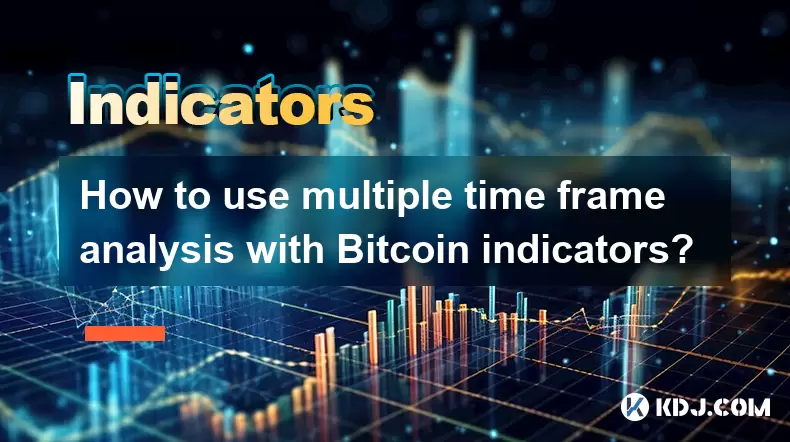
Understanding Multiple Time Frame Analysis in Bitcoin Trading
Multiple time frame analysis is a strategy used by traders to gain a comprehensive view of market trends and price movements. In the context of Bitcoin trading, this method involves analyzing the same asset across different time intervals—such as 1-hour, 4-hour, daily, or weekly charts—to identify stronger trade signals and filter out noise. By observing how Bitcoin behaves across these varying periods, traders can make more informed decisions about entry and exit points.
This approach helps avoid false breakouts and misleading signals that may appear on a single chart. For example, what seems like an uptrend on a 1-hour chart might be part of a larger downtrend visible only on the daily chart. Therefore, aligning trades with higher time frames can significantly increase the probability of success.
Selecting the Right Bitcoin Indicators for Multi-Time Frame Strategy
When implementing multiple time frame analysis, it’s crucial to choose the right set of indicators that complement each other across different chart intervals. Popular Bitcoin indicators include:
- Moving Averages (MA): Used to identify trend direction and potential reversal points.
- Relative Strength Index (RSI): Helps determine overbought or oversold conditions.
- MACD (Moving Average Convergence Divergence): Useful for spotting changes in momentum.
- Bollinger Bands: Indicate volatility and potential breakout zones.
These tools should be applied consistently across multiple time frames. For instance, using RSI on both 4-hour and daily charts can provide insight into whether the current price movement is sustainable or due for a correction.
Setting Up Your Charts for Multi-Time Frame Analysis
Before diving into indicator application, it's essential to configure your trading platform correctly for multi-time frame analysis. Most modern platforms allow users to open multiple charts simultaneously or overlay different time frames on a single chart.
Here’s how to proceed:
- Open at least three different time frames: short-term (e.g., 1-hour), medium-term (e.g., 4-hour), and long-term (e.g., daily).
- Apply the same set of indicators across all time frames to maintain consistency.
- Synchronize zoom levels so that key support/resistance levels are aligned visually.
- Use color-coding or annotations to differentiate between time frames when identifying patterns or signals.
Ensure that your chart setup reflects the same symbol (BTC/USD or BTC/USDT) across all windows to avoid confusion. This visual alignment makes it easier to spot confluence areas where multiple indicators across different time frames suggest similar outcomes.
Interpreting Signals Across Different Time Frames
The core principle of multi-time frame analysis lies in interpreting divergences and convergences between various time intervals. Here’s how to do it effectively:
- Begin by identifying the trend on the highest time frame (daily or weekly). This gives you the overall bias—whether bullish or bearish.
- Next, move to the medium time frame (4-hour) to look for pullbacks or corrections within the larger trend.
- Finally, use the short time frame (1-hour) to pinpoint precise entry and exit levels.
For example, if the daily chart shows a strong uptrend, but the 4-hour chart reveals an RSI divergence, it could signal a temporary pullback rather than a trend reversal. Similarly, if the MACD on the 1-hour chart crosses bullish, but the weekly trend remains bearish, caution should be exercised before taking long positions.
Practical Example Using Bitcoin Indicators Across Time Frames
Let’s walk through a practical scenario using real data and standard indicators:
Imagine you're monitoring Bitcoin on a daily chart, and you notice that the 20-day moving average has crossed above the 50-day MA, suggesting a bullish trend. However, the RSI is approaching overbought territory (above 70), indicating possible exhaustion.
Switching to the 4-hour chart, you see that the MACD line is crossing below the signal line, hinting at bearish momentum starting to build. The price is also testing a key resistance level that previously acted as support.
Now, looking at the 1-hour chart, you observe that the Bollinger Bands have contracted, signaling low volatility. But the price is bouncing off the lower band, which could mean a short-term rally is imminent.
In this case, while the long-term trend is bullish, there are signs of weakness in the shorter frames. A trader might wait for confirmation on the 1-hour chart before entering a position, ensuring alignment with the dominant trend observed on the daily chart.
Risk Management Considerations in Multi-Time Frame Trading
Even with a well-structured multi-time frame strategy, risk management must not be overlooked. Here are some critical considerations:
- Always place stop-loss orders based on the volatility seen in the shortest time frame being analyzed.
- Adjust position sizes according to the confidence level derived from confluence across time frames.
- Avoid over-leveraging, especially when trading volatile assets like Bitcoin.
- Monitor macroeconomic events or news that could override technical setups.
Using a risk-to-reward ratio of at least 1:2 ensures that even if half your trades fail, you still come out profitable in the long run. Additionally, keeping a detailed trading journal can help refine your multi-time frame strategy over time.
Frequently Asked Questions
Q: Can I use multiple time frame analysis on altcoins too?
Yes, the principles of multi-time frame analysis apply to all cryptocurrencies, including altcoins. However, ensure that the altcoin has sufficient liquidity and chart history to support reliable technical analysis.
Q: Should I always follow the trend identified on the highest time frame?
While aligning with the higher time frame increases the probability of successful trades, exceptions occur. Always look for confluence and confirmatory signals before making a decision.
Q: How many time frames should I analyze at once?
Most traders find analyzing three time frames—long-term, medium-term, and short-term—sufficient. More than that can lead to information overload and indecision.
Q: Is it necessary to use the same indicators across all time frames?
It’s recommended to use the same indicators across all time frames for consistency. However, fine-tuning parameters (like period settings) for each time frame can enhance accuracy.
Disclaimer:info@kdj.com
The information provided is not trading advice. kdj.com does not assume any responsibility for any investments made based on the information provided in this article. Cryptocurrencies are highly volatile and it is highly recommended that you invest with caution after thorough research!
If you believe that the content used on this website infringes your copyright, please contact us immediately (info@kdj.com) and we will delete it promptly.
- Bitcoin, Ripple, and TPS: A New Sheriff in Town?
- 2025-07-05 19:16:07
- Bitcoin Investment: Will You 10x by 2030?
- 2025-07-05 19:16:07
- BONK on Solana: Meme Coin Mania or the Real Deal?
- 2025-07-05 19:16:08
- PEPE Coin, Neo Pepe, and Market Makers: Decoding the Latest Crypto Moves
- 2025-07-05 19:16:08
- BONK Price Rockets: ETF Buzz Sparks Rally and Breakout!
- 2025-07-05 19:16:10
- BONK Price Rockets: Rally, Breakout, and What's Next for the Meme Coin
- 2025-07-05 19:16:10
Related knowledge

How to set up a moving average crossover alert for Dogecoin
Jul 05,2025 at 07:33pm
Understanding Moving Averages and Their Relevance to DogecoinMoving averages (MAs) are among the most commonly used technical indicators in cryptocurrency trading. They help smooth out price data over a specific time period, offering traders a clearer view of trends. Dogecoin, being a highly volatile altcoin, often exhibits strong momentum when certain ...
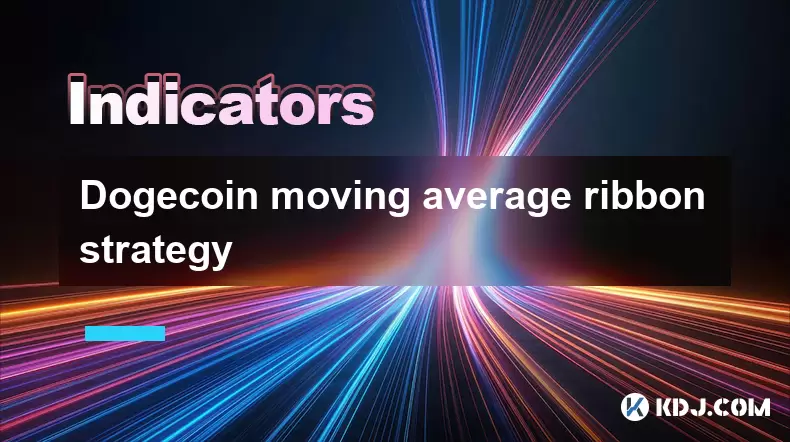
Dogecoin moving average ribbon strategy
Jul 05,2025 at 07:32pm
What is the Dogecoin Moving Average Ribbon Strategy?The Dogecoin moving average ribbon strategy is a technical analysis approach used by traders to identify potential trends and reversals in the price of DOGE. This method involves plotting multiple moving averages (MAs) on a price chart, typically of varying lengths, which visually form a 'ribbon' when ...
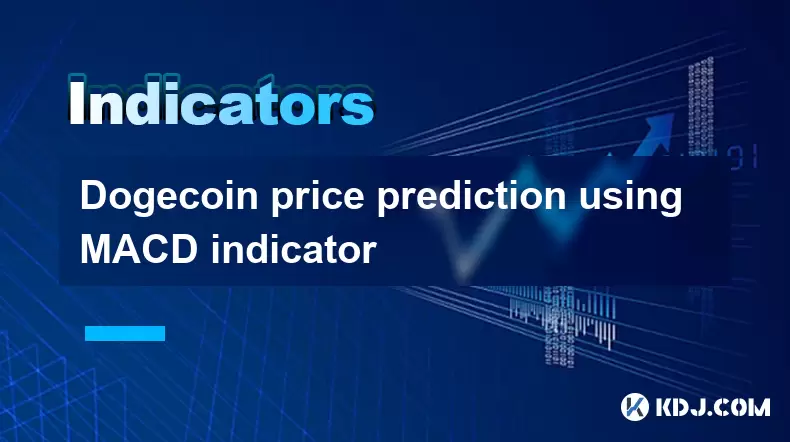
Dogecoin price prediction using MACD indicator
Jul 05,2025 at 07:18pm
Understanding the MACD Indicator in Cryptocurrency TradingThe Moving Average Convergence Divergence (MACD) is a popular technical analysis tool used by traders to identify potential price trends and reversals. It consists of three main components: the MACD line, the signal line, and the MACD histogram. The MACD line is calculated by subtracting the 26-p...
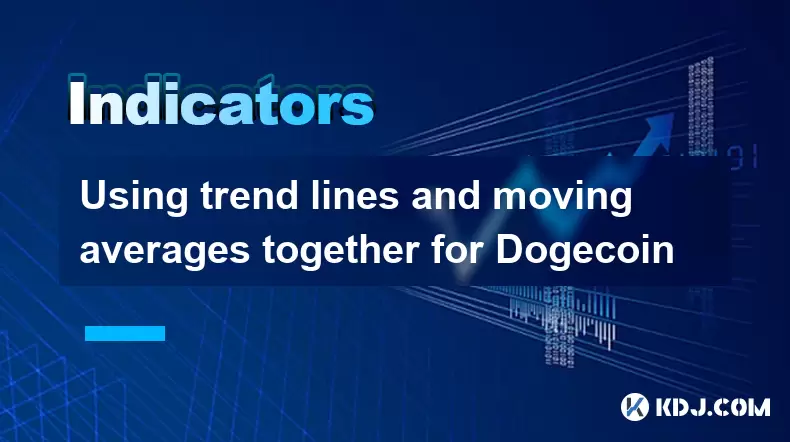
Using trend lines and moving averages together for Dogecoin
Jul 05,2025 at 07:16pm
Understanding Trend Lines in Cryptocurrency TradingTrend lines are essential tools for analyzing price movements in the cryptocurrency market. In Dogecoin trading, trend lines help identify potential support and resistance levels by connecting significant price points on a chart. When applied correctly, these lines can indicate whether the asset is in a...
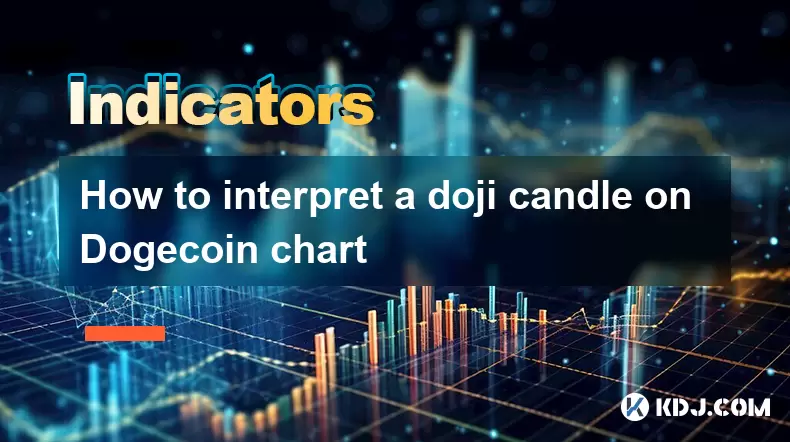
How to interpret a doji candle on Dogecoin chart
Jul 05,2025 at 07:49pm
Understanding the Doji Candlestick PatternA doji candle is a crucial technical indicator in cryptocurrency trading, especially when analyzing assets like Dogecoin. It represents market indecision and often signals potential reversals or continuation patterns. A doji forms when the opening and closing prices of an asset are nearly identical, resulting in...
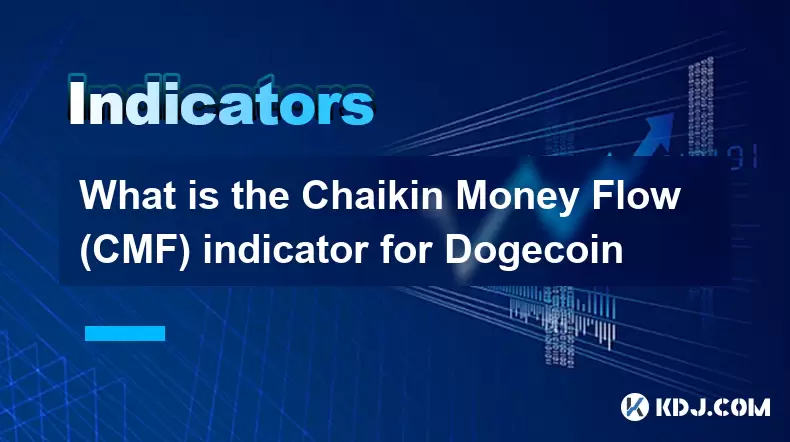
What is the Chaikin Money Flow (CMF) indicator for Dogecoin
Jul 05,2025 at 07:32pm
Understanding the Chaikin Money Flow (CMF) IndicatorThe Chaikin Money Flow (CMF) is a technical analysis indicator developed by Marc Chaikin to measure the accumulation and distribution of a financial asset over a specific period. It combines both price and volume data to assess whether institutional investors are actively buying or selling an asset. In...

How to set up a moving average crossover alert for Dogecoin
Jul 05,2025 at 07:33pm
Understanding Moving Averages and Their Relevance to DogecoinMoving averages (MAs) are among the most commonly used technical indicators in cryptocurrency trading. They help smooth out price data over a specific time period, offering traders a clearer view of trends. Dogecoin, being a highly volatile altcoin, often exhibits strong momentum when certain ...

Dogecoin moving average ribbon strategy
Jul 05,2025 at 07:32pm
What is the Dogecoin Moving Average Ribbon Strategy?The Dogecoin moving average ribbon strategy is a technical analysis approach used by traders to identify potential trends and reversals in the price of DOGE. This method involves plotting multiple moving averages (MAs) on a price chart, typically of varying lengths, which visually form a 'ribbon' when ...

Dogecoin price prediction using MACD indicator
Jul 05,2025 at 07:18pm
Understanding the MACD Indicator in Cryptocurrency TradingThe Moving Average Convergence Divergence (MACD) is a popular technical analysis tool used by traders to identify potential price trends and reversals. It consists of three main components: the MACD line, the signal line, and the MACD histogram. The MACD line is calculated by subtracting the 26-p...

Using trend lines and moving averages together for Dogecoin
Jul 05,2025 at 07:16pm
Understanding Trend Lines in Cryptocurrency TradingTrend lines are essential tools for analyzing price movements in the cryptocurrency market. In Dogecoin trading, trend lines help identify potential support and resistance levels by connecting significant price points on a chart. When applied correctly, these lines can indicate whether the asset is in a...

How to interpret a doji candle on Dogecoin chart
Jul 05,2025 at 07:49pm
Understanding the Doji Candlestick PatternA doji candle is a crucial technical indicator in cryptocurrency trading, especially when analyzing assets like Dogecoin. It represents market indecision and often signals potential reversals or continuation patterns. A doji forms when the opening and closing prices of an asset are nearly identical, resulting in...

What is the Chaikin Money Flow (CMF) indicator for Dogecoin
Jul 05,2025 at 07:32pm
Understanding the Chaikin Money Flow (CMF) IndicatorThe Chaikin Money Flow (CMF) is a technical analysis indicator developed by Marc Chaikin to measure the accumulation and distribution of a financial asset over a specific period. It combines both price and volume data to assess whether institutional investors are actively buying or selling an asset. In...
See all articles

























































































